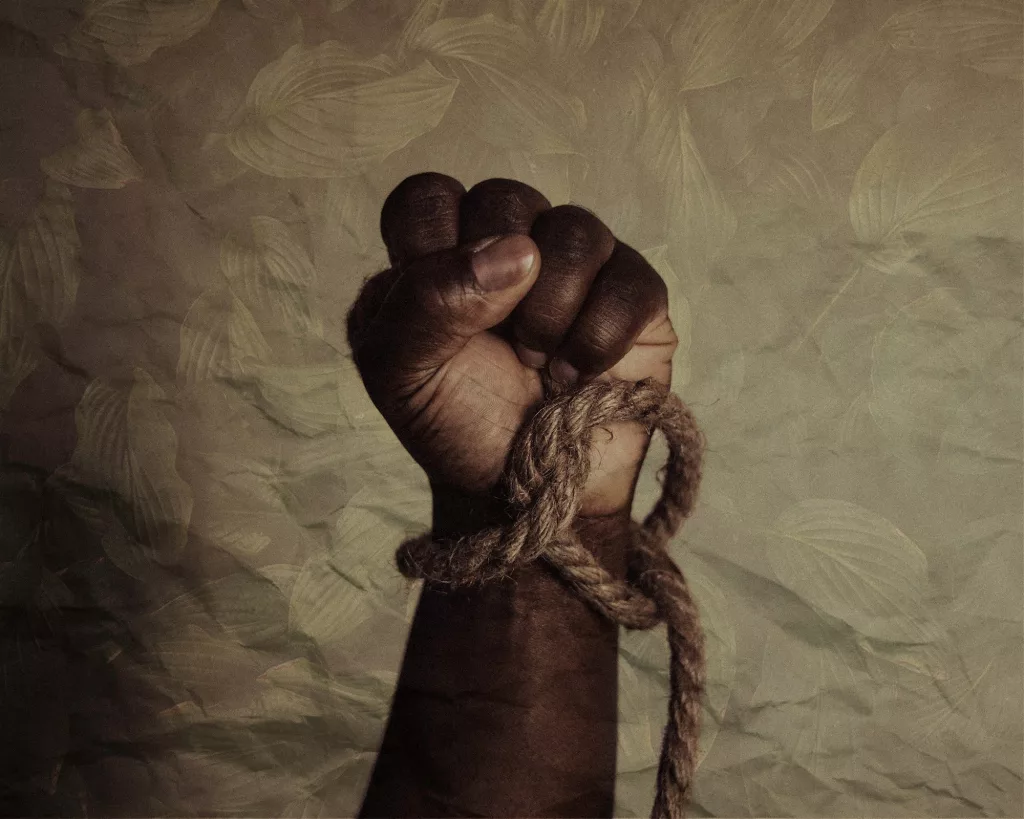The Hidden Crisis of Modern Slavery and Human Trafficking

Modern slavery and human trafficking are among the gravest human rights issues of our time, affecting millions of people worldwide. Despite the progress made in raising awareness and implementing legislative measures, these heinous crimes persist in nearly every country, across various industries and sectors. The victims of modern slavery and human trafficking are often subjected to unimaginable suffering, including forced labor, sexual exploitation, and other forms of coercion and abuse.
The hidden nature of these crimes makes it challenging to fully grasp the extent of the crisis. Victims are often invisible, trapped in situations where they cannot speak out or seek help. They may be hidden in plain sight, working in factories, on farms, in private homes, or on the streets. The exploitation they endure is not only a violation of their fundamental rights but also a profound affront to human dignity.
Addressing this crisis requires a comprehensive understanding of the factors that drive modern slavery and human trafficking, the impact on victims, and the multifaceted efforts needed to combat these crimes. This article delves into the intricacies of modern slavery and human trafficking, exploring their root causes, the scope of the crisis, the experiences of victims, and the global efforts to eradicate these inhumane practices.
By shedding light on the hidden crisis of modern slavery and human trafficking, we aim to raise awareness, inspire action, and foster a collective commitment to creating a world where every individual can live free from exploitation and abuse. The fight against modern slavery and human trafficking is a daunting challenge, but it is one that we must undertake with unwavering resolve and compassion.
Understanding Modern Slavery and Human Trafficking
Modern slavery encompasses various forms of exploitation, including forced labor, debt bondage, forced marriage, and human trafficking. Human trafficking involves the recruitment, transportation, transfer, harboring, or receipt of persons using threats, force, coercion, abduction, fraud, or deception for the purpose of exploitation.
Victims of modern slavery and human trafficking often find themselves in situations where they have little or no control over their lives. They are subjected to physical and psychological abuse, deprived of their freedom, and forced to work or perform services against their will. This exploitation occurs in various industries, including agriculture, construction, domestic work, and the sex trade.
The Scope of the Crisis
According to the Global Slavery Index, over 50 million people are affected by modern slavery worldwide. This crisis cuts across industries and nations, with forced labor generating $236 billion in illegal profits annually. The United States, for example, is one of the top destinations for human trafficking, with an estimated 14,500 to 17,500 foreign nationals trafficked into the country each year. Additionally, approximately 200,000 American children are at risk for trafficking into the sex industry.
The International Labour Organization (ILO) estimates that 25 million people are trapped in forced labor globally, with an additional 15 million in forced marriages. These staggering numbers highlight the pervasive nature of modern slavery and human trafficking and the urgent need for concerted efforts to address the crisis.
Root Causes
Several factors contribute to the persistence of modern slavery and human trafficking, including poverty, migration, weak governance, geopolitical conflicts, and climate change. These systemic vulnerabilities create conditions that make individuals more susceptible to exploitation.
Poverty and Economic Inequality
Poverty is a significant driver of modern slavery and human trafficking. People living in poverty are often desperate for economic opportunities and may be lured into exploitative situations with promises of employment or a better life. Economic inequality exacerbates the problem, as marginalized and vulnerable populations lack access to education, healthcare, and legal protections.
Migration and Displacement
Migration, both voluntary and forced, increases the risk of exploitation. Migrants seeking better opportunities may fall prey to traffickers who exploit their vulnerability and lack of legal status. Additionally, conflict and natural disasters can displace large populations, leaving them susceptible to trafficking and forced labor.
Weak Governance and Corruption
Weak governance and corruption create an environment where traffickers can operate with impunity. Inadequate legal frameworks, lack of enforcement, and corruption within law enforcement agencies hinder efforts to combat modern slavery and human trafficking. Victims often have little recourse to justice and are unable to seek protection or assistance.
Climate Change and Environmental Disasters
Climate change and environmental disasters can exacerbate vulnerabilities to exploitation. As climate-related displacement increases, affected populations may resort to desperate measures to survive, making them prime targets for traffickers. Environmental degradation also disrupts livelihoods, pushing people into exploitative labor conditions.
Impact on Victims
The impact of modern slavery and human trafficking on victims is profound and far-reaching. Victims experience physical and psychological trauma, social isolation, and a loss of dignity and autonomy. The exploitation they endure has lasting effects on their health, well-being, and future prospects.
Physical and Psychological Trauma
Victims of modern slavery and human trafficking are often subjected to physical violence, sexual abuse, and severe neglect. The harsh conditions and lack of medical care can lead to chronic health issues, injuries, and even death. The psychological trauma inflicted on victims is equally devastating, resulting in anxiety, depression, post-traumatic stress disorder (PTSD), and other mental health conditions.
Social Isolation and Stigma
Victims of trafficking and exploitation are often isolated from their families and communities. They may be kept in conditions of confinement, with limited or no access to communication with the outside world. The stigma associated with exploitation, particularly in the case of sexual trafficking, can lead to further social exclusion and discrimination.
Loss of Dignity and Autonomy
Modern slavery and human trafficking strip individuals of their dignity and autonomy. Victims are treated as commodities, bought and sold for profit. They lose control over their lives and are forced to endure degrading and inhumane conditions. The loss of freedom and the constant fear of violence create a sense of hopelessness and despair.
Efforts to Combat the Crisis
Various organizations, governments, and international bodies are working to combat modern slavery and human trafficking through prevention, prosecution, and protection. These efforts aim to disrupt the systems of exploitation, support victims, and hold perpetrators accountable.
Prevention
Preventing modern slavery and human trafficking involves addressing the root causes and vulnerabilities that lead to exploitation. This includes:
- Raising Awareness: Public awareness campaigns educate communities about the risks and signs of trafficking, empowering individuals to protect themselves and others.
- Economic Empowerment: Providing economic opportunities, education, and skills training helps vulnerable populations build sustainable livelihoods and reduces their risk of exploitation.
- Safe Migration: Ensuring safe and legal migration pathways can protect migrants from traffickers and exploitative labor conditions.
Prosecution
Effective prosecution of traffickers and exploiters is essential to combat modern slavery. This involves:
- Strengthening Legal Frameworks: Enacting and enforcing comprehensive anti-trafficking laws that criminalize all forms of exploitation.
- Training Law Enforcement: Equipping law enforcement agencies with the knowledge and resources to identify, investigate, and prosecute trafficking cases.
- International Cooperation: Collaborating across borders to disrupt trafficking networks and bring perpetrators to justice.
Protection
Protecting victims of modern slavery and human trafficking involves providing support and assistance to help them rebuild their lives. This includes:
- Rescue and Rehabilitation: Ensuring safe rescue operations and providing medical care, psychological support, and legal assistance to victims.
- Reintegration Programs: Supporting victims in reintegrating into society through education, job training, and social services.
- Victim-Centered Approach: Prioritizing the needs and rights of victims, ensuring they are treated with dignity and respect throughout the recovery process.
The Role of Technology
Technology plays a crucial role in detecting patterns and protecting victims of human trafficking. Data sharing strategies and technological advancements can help identify and support victims, making it easier to disrupt the systems of slavedrivers. For example:
- Big Data and AI: Analyzing large datasets can reveal trafficking patterns and hotspots, enabling targeted interventions.
- Online Platforms: Utilizing social media and online platforms to raise awareness, report trafficking incidents, and connect victims with support services.
- Mobile Apps: Developing mobile apps that provide information, resources, and emergency assistance to at-risk individuals.
The Way Forward
Addressing the hidden crisis of modern slavery and human trafficking requires a comprehensive, cross-sectoral approach that disrupts the systems of exploitation. This includes:
- Strengthening International Collaborations: Governments, international organizations, and NGOs must work together to share information, resources, and best practices in combating trafficking.
- Implementing Robust Policies: Enacting and enforcing strong anti-trafficking laws and policies that protect victims and hold perpetrators accountable.
- Raising Public Awareness: Educating the public about the signs of trafficking and the importance of reporting suspicious activities.
- Supporting Victims: Providing comprehensive support services to help victims recover and reintegrate into society.
By working together, we can make significant strides in eradicating this grave human rights issue and ensuring a safer, more just world for all. The fight against modern slavery and human trafficking requires ongoing commitment, collaboration, and innovation. Every effort counts in creating a future where no one is subjected to exploitation and everyone can live with dignity and freedom.



